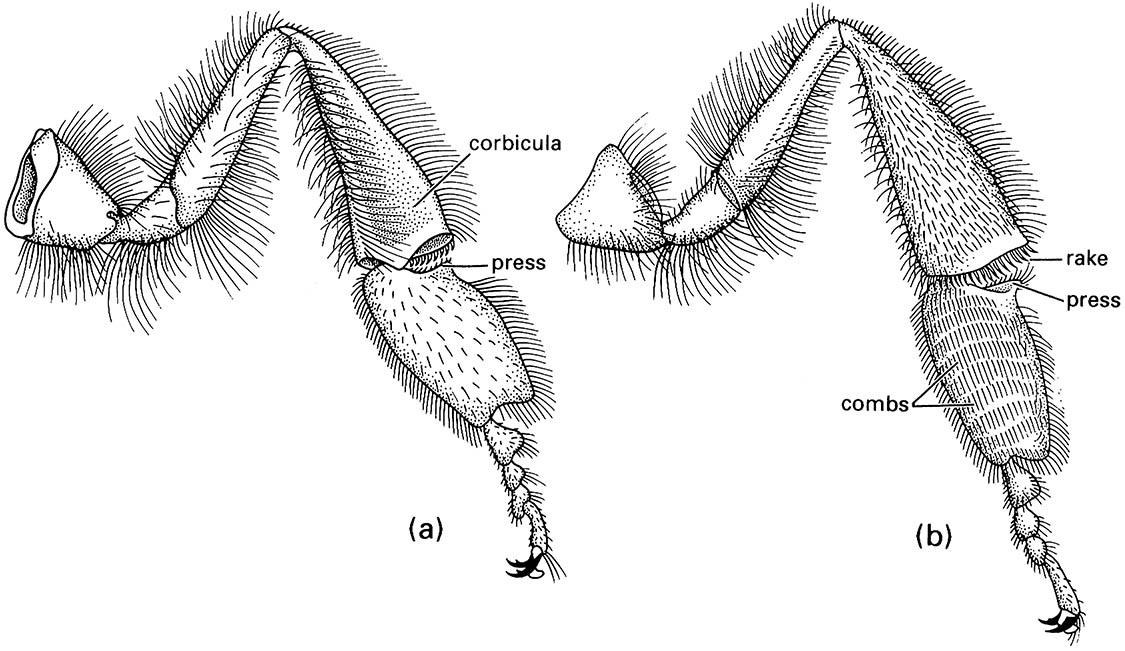Figures 12.4

Figures 12.4. The hind leg of a worker honey bee, Apis mellifera (Hymenoptera: Apidae):
(a) outer surface showing corbicula, or pollen basket (consisting of a depression fringed by stiff setae), and the press that pushes the pollen into the basket; (b) the inner surface with the combs and rakes that manipulate pollen into the press prior to packing. (After Snodgrass 1956; Winston 1987)

